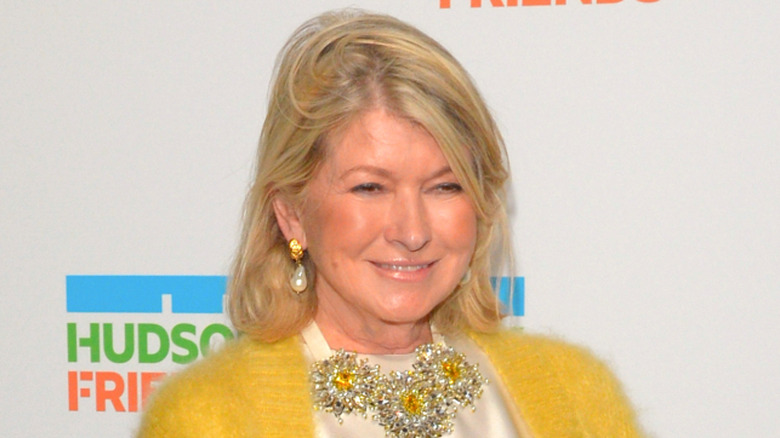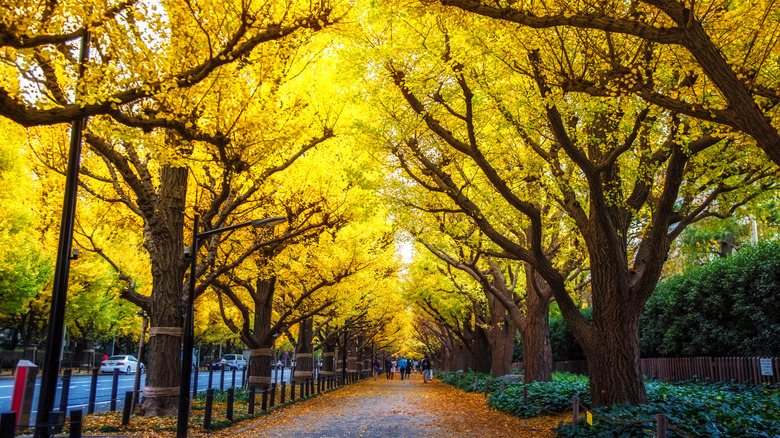Martha Stewart Has Thousands Of Trees, But One Stands Out For Its Beautiful Fall Foliage
Ginkgo trees are beloved on Martha Stewart's farm, where they welcome autumn with fan-shaped leaves that turn a brilliant yellow and move in enchanting ways. "This shape and the elongated petiole cause the foliage to flutter in the slightest breeze," Stewart notes on The Martha Blog, where she shared pictures of these prehistoric plants.
With many specimens reaching a height of 100 feet, even loftier than red maples (Acer rubrum) and other super-tall trees you can plant in your yard, ginkgos are photo-worthy any time of year. They're also found in a range of picturesque habitats, from bustling cities to tranquil forests. Though ginkgo trees were around when dinosaurs roamed the earth, they're well suited for the challenges of modern living. They can endure nibbles from creatures that currently roam the earth, namely deer, and they're a great fit for urban areas because they can handle polluted air, compressed ground, and soil with some salt or clay in it.
Typically found in USDA hardiness zones 3 through 8, ginkgo trees (Ginkgo biloba) also tolerate significant amounts of heat and frost. Their leaves' distinctive, dual-lobed shape resembles that of the maidenhair fern (Adiantum spp.) leaf. For this reason, ginkgos are sometimes called maidenhair trees. Whatever you call them, these gorgeous trees are a testament to adaptability, persisting through the climate shifts and seismic changes of the last 200 million years.
Differences between male and female ginkgo trees
Ginkgo trees come in male and female varieties. The females make seeds, and the males make pollen. When the seeds appear in the fall, they're tucked in a fruit-like package that makes a mess when it hits the ground. They also smell atrocious. On The Martha Blog, Stewart describes the odor as "quite disagreeable" and "hard to miss." She also shares a helpful warning: If you come across the seeds, don't touch them with your bare hands. They're a source of urushiol, the rash-causing oil found in poison ivy. Be sure to avoid dangerous mistakes when dealing with poison ivy and other plants containing urushiol. For example, never burn them, which creates dangerous, urushiol-filled smoke.
Since ginkgo seeds create so many problems, garden centers only stock the male trees, which look very similar to the females. You're not out of the woods yet, though: Ginkgos can change sex, so your tree from the nursery might produce stinky seeds in the future. You're not alone if it happens to you: Even picture-perfect estates like Stewart's have to contend with ginkgo seeds. If you're feeling adventurous, you can taste the seeds, which are edible when roasted and have a rich culinary history in China, Japan, and Korea. This suggestion comes with a few caveats: Never eat raw ginkgo seeds, which are toxic to humans, and don't eat more than a few in one day, which can also make you sick.

